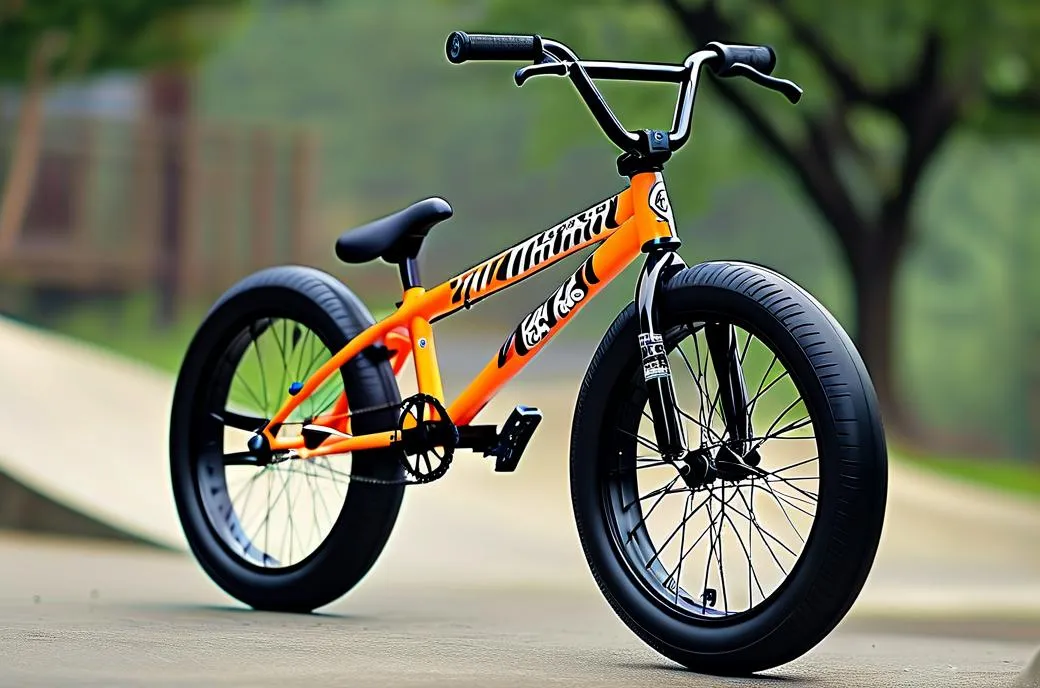Stepping into the world of BMX biking? Whether you’re eyeing stunts at the skatepark or chasing podium finishes at races, choosing the right 18-inch BMX bike requires more than just picking a flashy design. Many riders—especially newcomers—fall into avoidable traps that compromise both performance and safety. Let’s break down the most common mistakes and how to sidestep them while ensuring your ride stays lightweight, durable, and ready for action.
Mistake #1: Ignoring Frame Geometry
A bike’s frame geometry directly impacts handling, stability, and maneuverability—critical factors for stunts or racing. Beginners often prioritize aesthetics over functional design, leading to poor control during jumps or tight turns. Look for a chromoly steel frame (like those from brands such as Sunday Bikes or Cult), which balances strength with weight savings. For racing-focused builds, opt for a slightly longer top tube (18.5″-19″) to improve stability at high speeds. Stunt riders should prioritize compact frames (17.5″-18″) for quicker spins and tricks.
Mistake #2: Sacrificing Durability for Weight Savings
While a lightweight BMX bike is essential for aerial tricks, cutting corners on materials can spell disaster. Avoid cheap aluminum components that crack under pressure or hi-ten steel frames that add unnecessary bulk. Instead:
– Choose double-wall rims (e.g., Odyssey Hazard Lite) to prevent bending on hard landings.
– Prioritize sealed bearing hubs (like Profile Racing Mini) over loose-ball setups for longevity.
– Verify welds are smooth and reinforced at stress points—rough seams indicate poor craftsmanship.
Mistake #3: Overlooking Tire Selection
Tires aren’t one-size-fits-all. Using race-specific tires on concrete parks (or vice versa) reduces grip and increases wear. Here’s a quick guide:
– Street/Park Riding: Opt for wider tires (2.3″-2.4″) with hard-compound rubber (e.g., BSD Donnasqueak) to resist abrasion on ledges.
– Racing/Dirt Tracks: Narrower tires (1.75″-1.95″) with aggressive tread patterns (like Maxxis DTH) enhance speed and dirt traction.
Pro Tip: Always check psi recommendations—overinflation leads to reduced shock absorption.
Mistake #4: Neglecting Component Compatibility
A common pitfall is mixing incompatible parts, such as pairing a mid-bottom bracket with a Spanish-crank setup, causing alignment issues and premature wear. Consult compatibility charts from manufacturers like Shadow Conspiracy or Snafu before upgrading components like cranksets or forks.
Mistake #5: Skipping Regular Maintenance
Even the toughest bikes fail without care. A 2023 study by ASTM International found that 68% of BMX-related injuries stem from neglected maintenance. Follow this routine:
1. Weekly: Clean chains with degreaser and lubricate with PTFE-based oil.
2. Biweekly: Inspect brake pads (replace if under 1mm thick) and tighten bolts to manufacturer torque specs.
3. Monthly: Check spoke tension and true wheels using a dial indicator.
Mistake #6: Buying the Wrong Size for the Rider
An 18-inch BMX bike typically suits riders aged 8–12 or those under 5′ tall, but sizing varies by brand. Test standover clearance—there should be 1″-2″ between the top tube and the rider’s inseam when standing flat-footed. Brands like Fit Bike Co offer detailed sizing charts based on age/height ratios.
Why Professional Input Matters
“A properly spec’d bike isn’t just safer—it becomes an extension of your body,” says pro rider Alex Johnson, who trains on custom Subrosa builds. Always consult certified mechanics or experienced riders before finalizing upgrades, especially if competing in events governed by USA BMX or NBL regulations.
By avoiding these six missteps, you’ll not only extend your bike’s lifespan but also unlock peak performance where it counts most—whether you’re nailing tailwhips or sprinting toward the finish line. Prioritize quality over trends, stay vigilant with upkeep, and let your skills—not equipment flaws—define your ride.
Looking for verified gear recommendations? Check our partner reviews at BMX Union or Vital BMX for lab-tested component rankings.




Leave a Reply